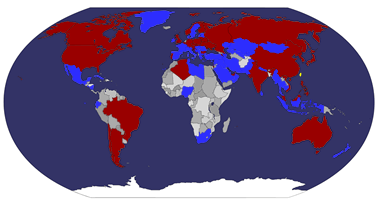Série Relations Diplomatiques- La Thaïlande: Broméliacées des la Forêt de L'Atlantique, l'Orchidée et l'Architecture
 In this issue, Series Diplomatic Relations, the Post focus on architecture and the environment, with the Thai orchid and bromeliads of the Brazilian Atlantic Forest, as well as individual buildings in these countries, recording the occasion of the fiftieth anniversary of diplomatic relations between the two nations, their peculiarities and importance in environmental and architectural contexts.
In this issue, Series Diplomatic Relations, the Post focus on architecture and the environment, with the Thai orchid and bromeliads of the Brazilian Atlantic Forest, as well as individual buildings in these countries, recording the occasion of the fiftieth anniversary of diplomatic relations between the two nations, their peculiarities and importance in environmental and architectural contexts.Orchid Rabo-de-Fox-White
In Thailand, this orchid is found in most of the territory from the eastern province of Prachinburi, thence north and passing through the provinces Nakornsawan, Loei and Chiengmai. Its name originated because of their long, thin, dense and compact bright white sheets, which amounts to about 40cm, resembling a fox tail.
Hall of the Dusit Maha Prasat Throne
The Throne Room Dusit Maha Prasat is the main building among the various buildings of the famous Grand Palace in Bangkok, built in 1789 by King Rama I, first king of the Chakri Dynasty (current dynasty). It was built in the shape of a cross with four wings covered with four tabs from the center. Its architecture is famous for being the most elegant building of the Rattanakosin Period (1782-1932).
In the past, the building was used for coronations, hearings and reviews of Buddhist scriptures.Today it is used for funeral rites before the cremation of kings, queens and members of the royal family. Has served for this purpose since the death of King Rama I. In it are carried out special events such as the annual celebration of the Coronation Day, held on May 5.
Cathedral of San Pedro de Alcântara - Petrópolis / RJ
Situated in Petrópolis, in the highland city of Rio de Janeiro, had its origin in the parish seat installed in temple adjacent to the Imperial Palace, built between 1847 and 1848 on land reserved by Major Júlio Frederico Koeler, and worked there for over 77 years . Since the inauguration of the first array, it has been thought of building another on the hill of Belvedere. Pedro II and his daughter, Princess Isabel, led the initiative. On 12 March 1876, launched the first foundation stone for the construction of the matrix cathedral, whose works were started under the responsibility of the engineer Francisco Caminhoá.
In 1884, he was released, then the second cornerstone. At the suggestion of the Princess Isabel the facade of the array is returned to the Avenida Koeler, which holds to this day, the beauty and harmony of the whole neo-Gothic architectural style. The work, paralyzed in 1901, resumed in 1914, and November 29, 1925, the new headquarters was inaugurated, although still unfinished.
In 1929, Father Francisco Garcia Costa began a campaign for the completion of the facade, the imperial chapel and baptismal and four floors of the tower. The works were completed on December 5, 1939, when he opened the tomb of the emperors. Were closed in 1969 to lift the tower and the placement of the bells, the Diocesan Bishop D. Manuel Pedro da Cunha Cintra. The cell-tower houses five bronze bells, and the largest, the "San Pedro de Alcantara", weighs four tons.









.jpg)























 taiwan
taiwan  cover or postcard
cover or postcard  FDC
FDC 






























































































No comments:
Post a Comment